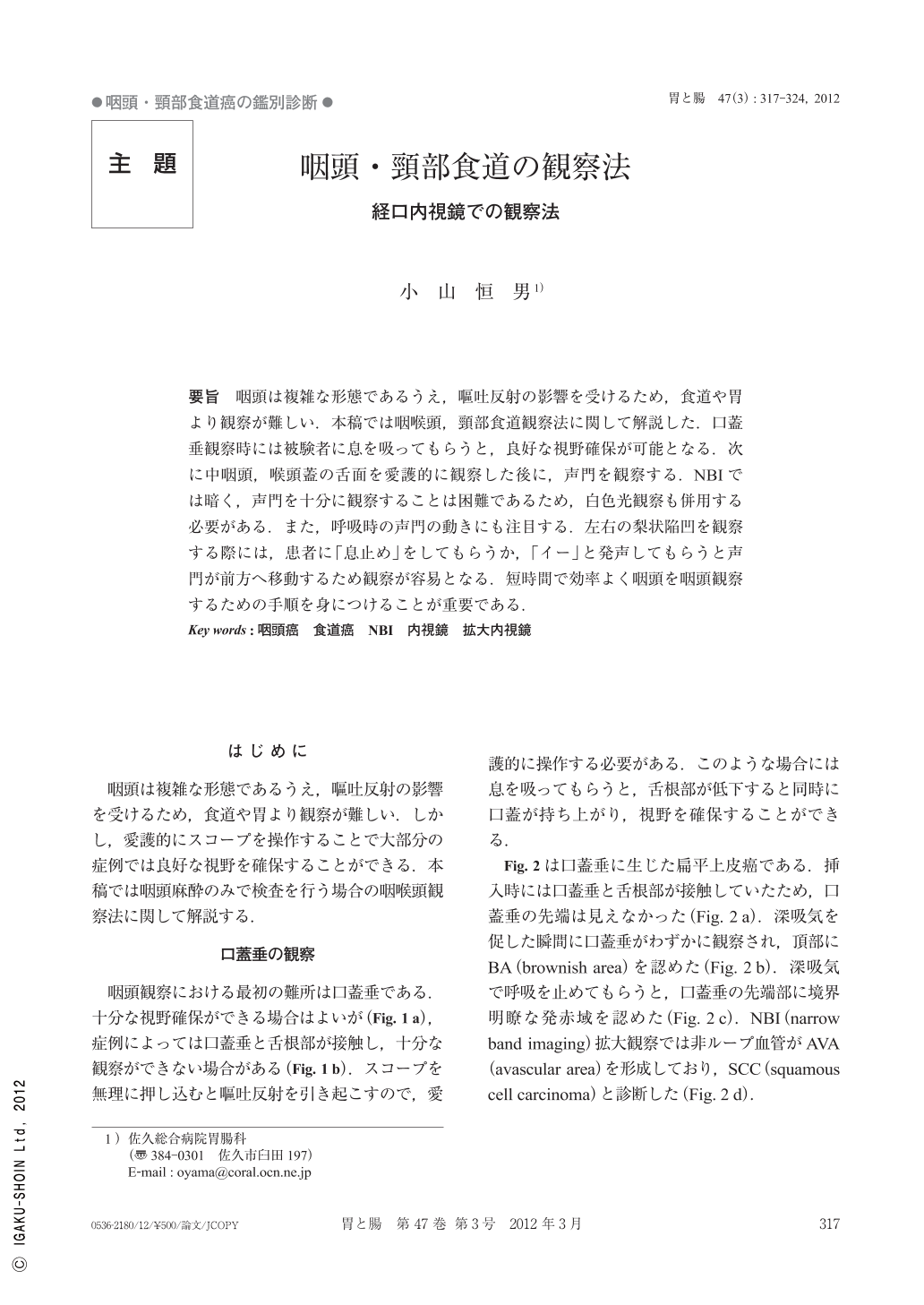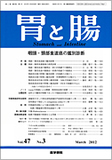Japanese
English
- 有料閲覧
- Abstract 文献概要
- 1ページ目 Look Inside
- 参考文献 Reference
要旨 咽頭は複雑な形態であるうえ,嘔吐反射の影響を受けるため,食道や胃より観察が難しい.本稿では咽喉頭,頸部食道観察法に関して解説した.口蓋垂観察時には被験者に息を吸ってもらうと,良好な視野確保が可能となる.次に中咽頭,喉頭蓋の舌面を愛護的に観察した後に,声門を観察する.NBIでは暗く,声門を十分に観察することは困難であるため,白色光観察も併用する必要がある.また,呼吸時の声門の動きにも注目する.左右の梨状陥凹を観察する際には,患者に「息止め」をしてもらうか,「イー」と発声してもらうと声門が前方へ移動するため観察が容易となる.短時間で効率よく咽頭を咽頭観察するための手順を身につけることが重要である.
Endoscopic observation of the oropharynx is difficult, because the structure is complicated, removing mucus is impossible and vomiting reflex disturbs observation. There are some important points to find oropharyneal superficial squamous cell carcinoma(SCC). At first, the uvula should be observed. However, when it can't be observed well, the endoscopist should ask the patient to breathe in, the uvula can then be better observed. Next, the epiglottis should be observed. The tip of the endoscope is inserted gently between the epiglottis and the tongue to observe the tonsil side of the epiglottis. Sometimes, the observation of the vocal cords by narrow band imaging(NBI)is difficult because the endoscopic view of NBI is darker than that of white light. Therefore, the vocal cords should be observed by not only NBI but also with white light.
Finally, the pyriform sinus should be observed. When the patient vocalizes, the vocal cords move to the anterior, making the observation of the pyriform sinus easier.
Precise observation is necessary for early detection of oropharyngeal SCC.

Copyright © 2012, Igaku-Shoin Ltd. All rights reserved.


